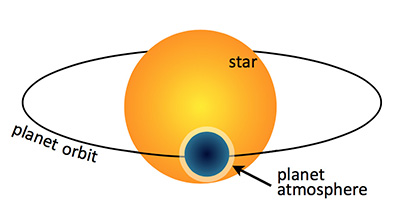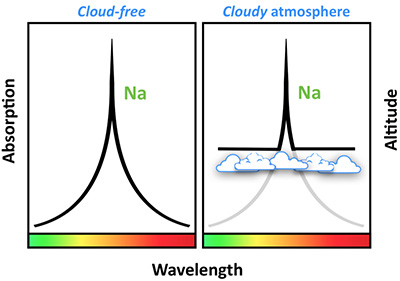Campus News
Astronomers find an exoplanet atmosphere free of clouds
An international team of astronomers has detected an exoplanet atmosphere that is free of clouds, marking a pivotal breakthrough in the quest to better understand what lies at the outer reaches of our galaxy.


An international team of astronomers has detected an exoplanet atmosphere that is free of clouds, marking a pivotal breakthrough in the quest to better understand what lies at the outer reaches of our galaxy.
Using Europe’s 8.2-meter Very Large Telescope in Chile, the team studied the atmosphere of the planet WASP-96b when it passed in front of its host star. This enabled the researchers to measure the decrease of starlight caused by the planet and its atmosphere and thereby determine the planet’s atmospheric composition. The researchers published their findings May 7 in Nature.
Clouds and hazes are known to exist in the atmospheres of some of the hottest and coldest solar system planets and exoplanets. The presence or absence of clouds and their ability to block light plays an important role in the overall energy budget of planetary atmospheres.
“It is difficult to predict which of these hot atmospheres will have thick clouds. By seeing the full range of possible atmospheres, from very cloudy to nearly cloud-free like WASP-96b, we’ll gain a better understanding of what these clouds are made of,” explained coauthor Jonathan Fortney, professor of astronomy and astrophysics at UC Santa Cruz.
Just like an individual’s fingerprints are unique, atoms and molecules have a unique spectral characteristic that can be used to detect their presence in celestial objects. The spectrum of WASP-96b shows the complete fingerprint of sodium, which can only be observed for an atmosphere free of clouds.
“We’ve been looking at over twenty exoplanet transit spectra. WASP-96b is the only exoplanet that appears to be entirely cloud-free and shows such a clear sodium signature, making the planet a benchmark for characterization,” said lead investigator Nikolay Nikolov from the University of Exeter in the United Kingdom.
WASP-96b is a typical hot gas-giant exoplanet, similar to Saturn in mass but with a much larger radius, exceeding the size of Jupiter by 20 percent. The planet periodically transits a sun-like star 980 light years away in the southern constellation Phoenix, halfway between the southern jewels Fomalhaut (α Piscis Austrini) and Achernar (α Eridani).
It has long been predicted that sodium exists in the atmospheres of hot gas-giant exoplanets, and in a cloud-free atmosphere it would produce spectra that are similar in shape to the profile of a camping tent.
“Until now, sodium was revealed either as a very narrow peak or found to be completely missing,” Nikolov said. “This is because the characteristic ‘tent-shaped’ profile can only be produced deep in the atmosphere of the planet, and for most planets, clouds appear to get in the way.”
The sodium signature seen in WASP-96b suggests an atmosphere free of clouds. The observation allowed the team to measure how abundant sodium is in the atmosphere of the planet, finding levels similar to those found in our own solar system.
“WASP-96b will also provide us with a unique opportunity to determine the abundances of other molecules, such as water, carbon monoxide, and carbon dioxide, with future observations,” said coauthor Ernst de Mooij of Dublin City University.
The team aims to look at the signatures of these other molecules in the atmosphere of WASP-96b with the Hubble and James Webb Space Telescopes as well as with ground-based telescopes.